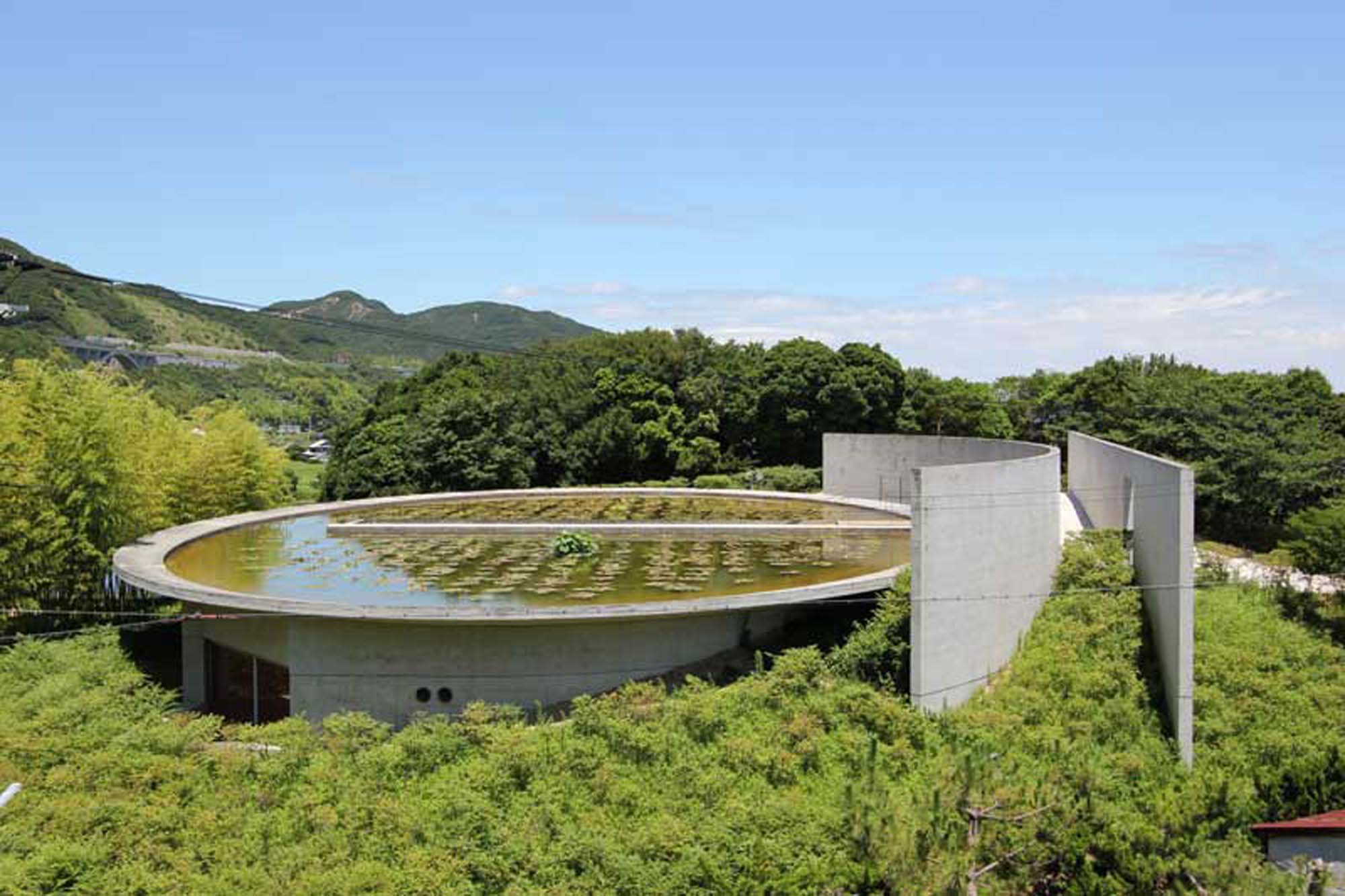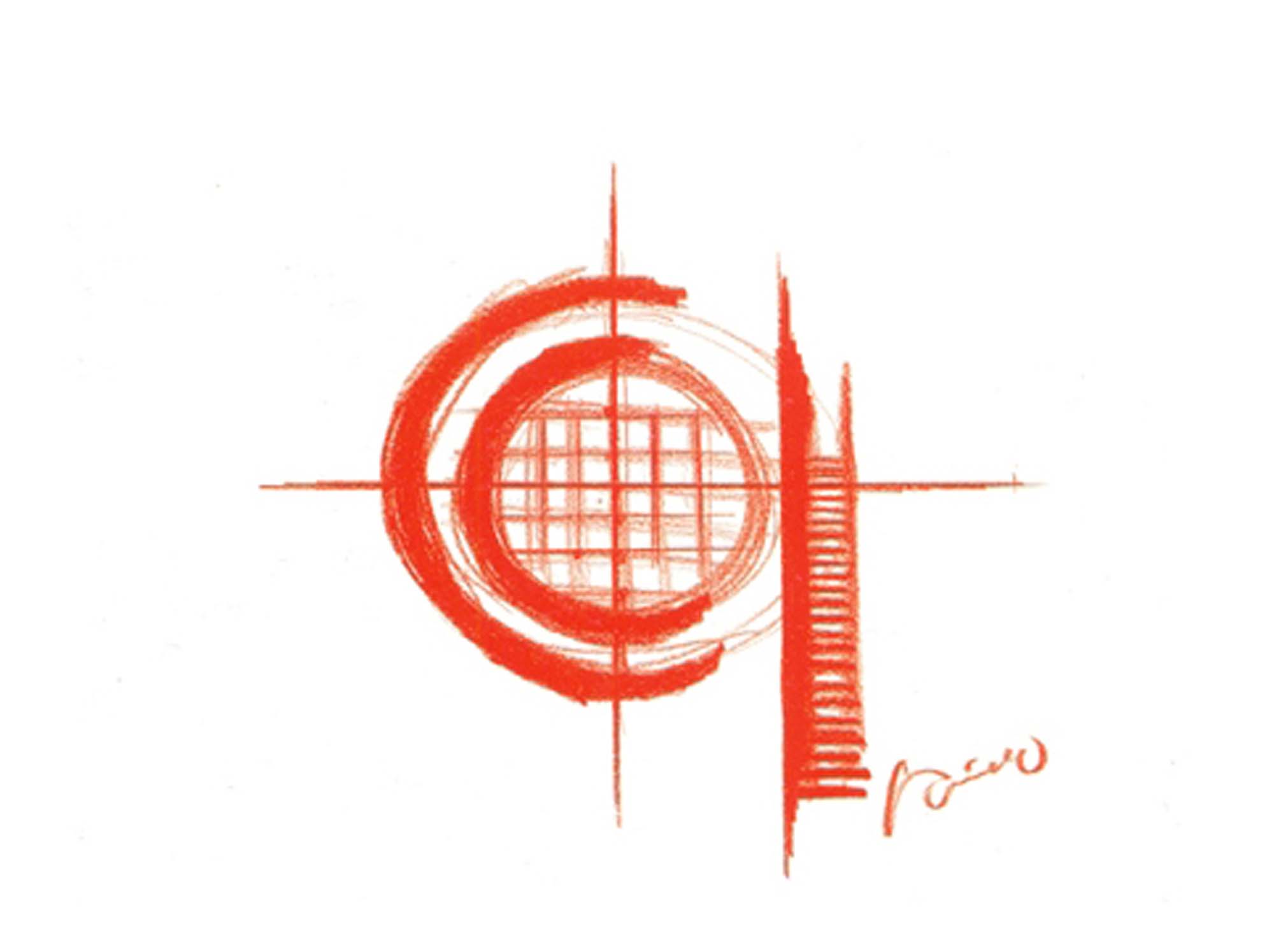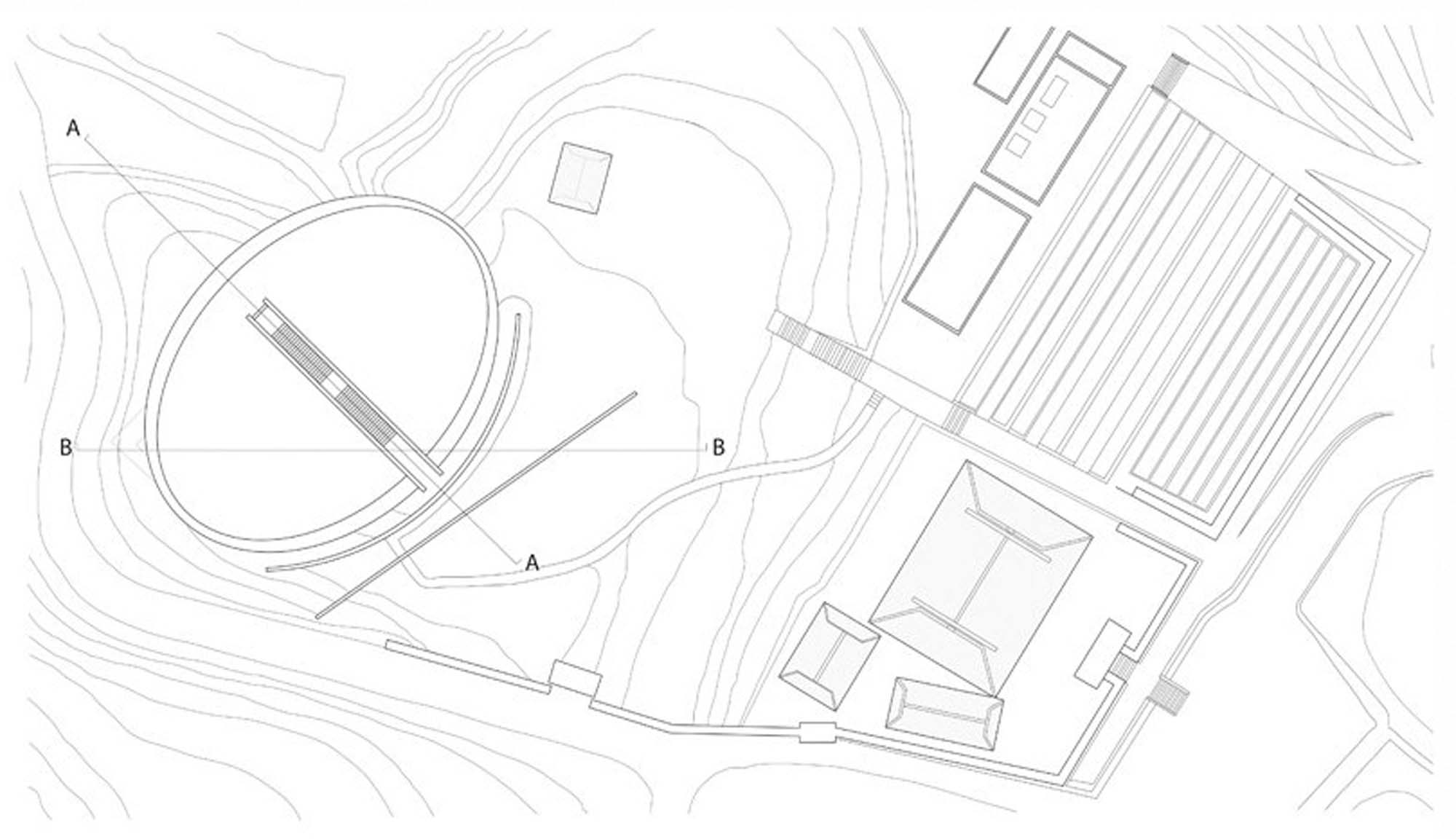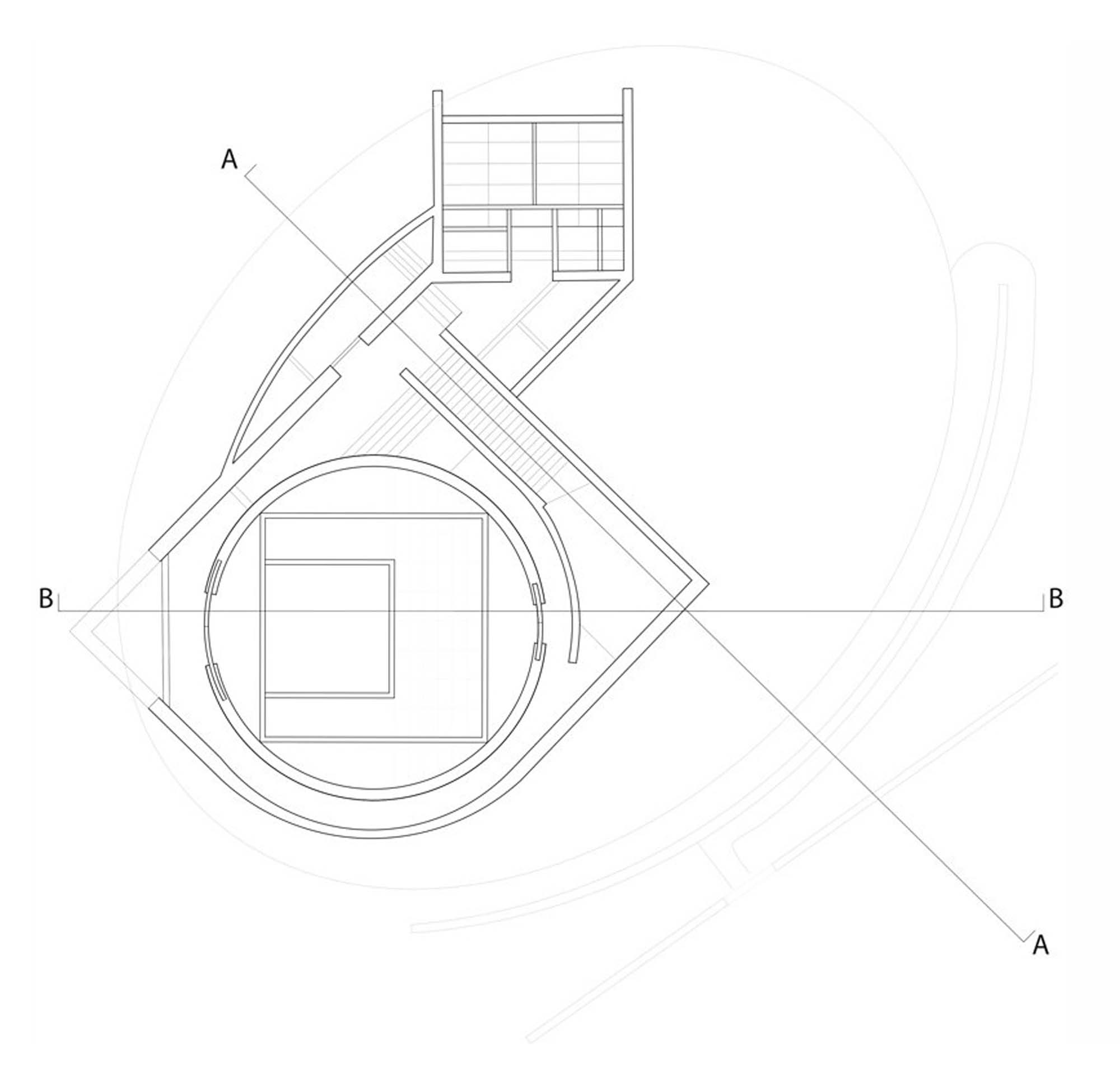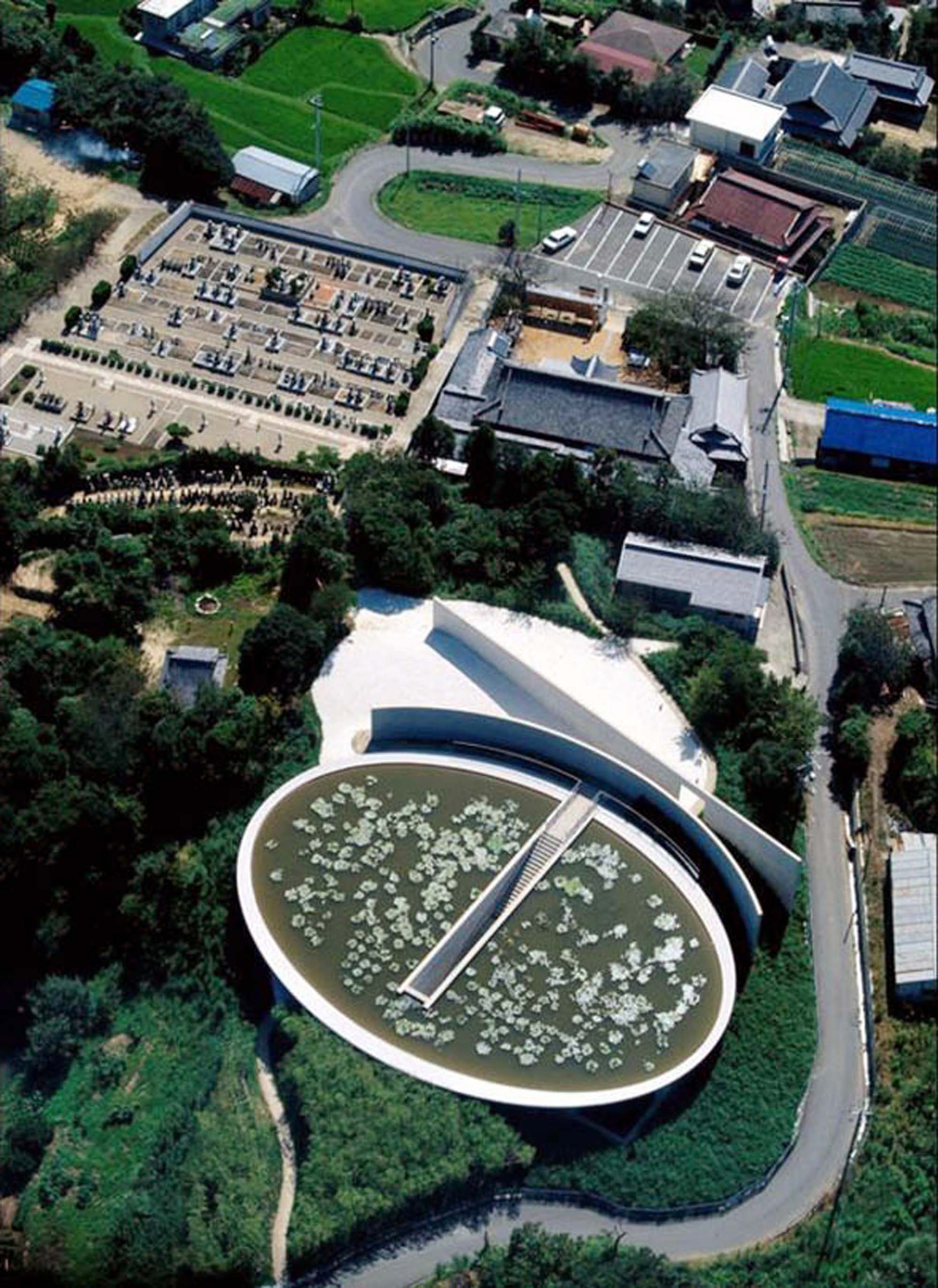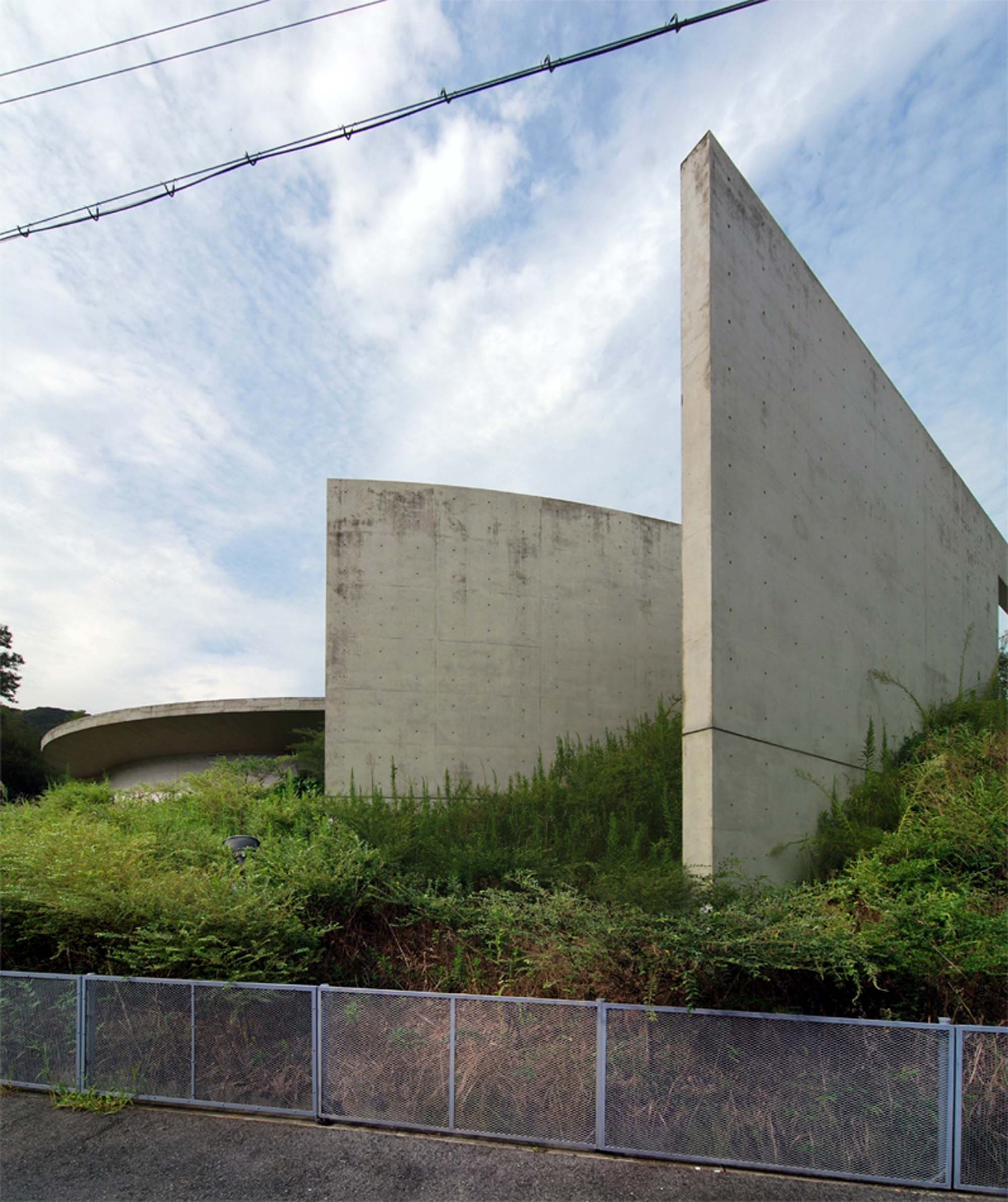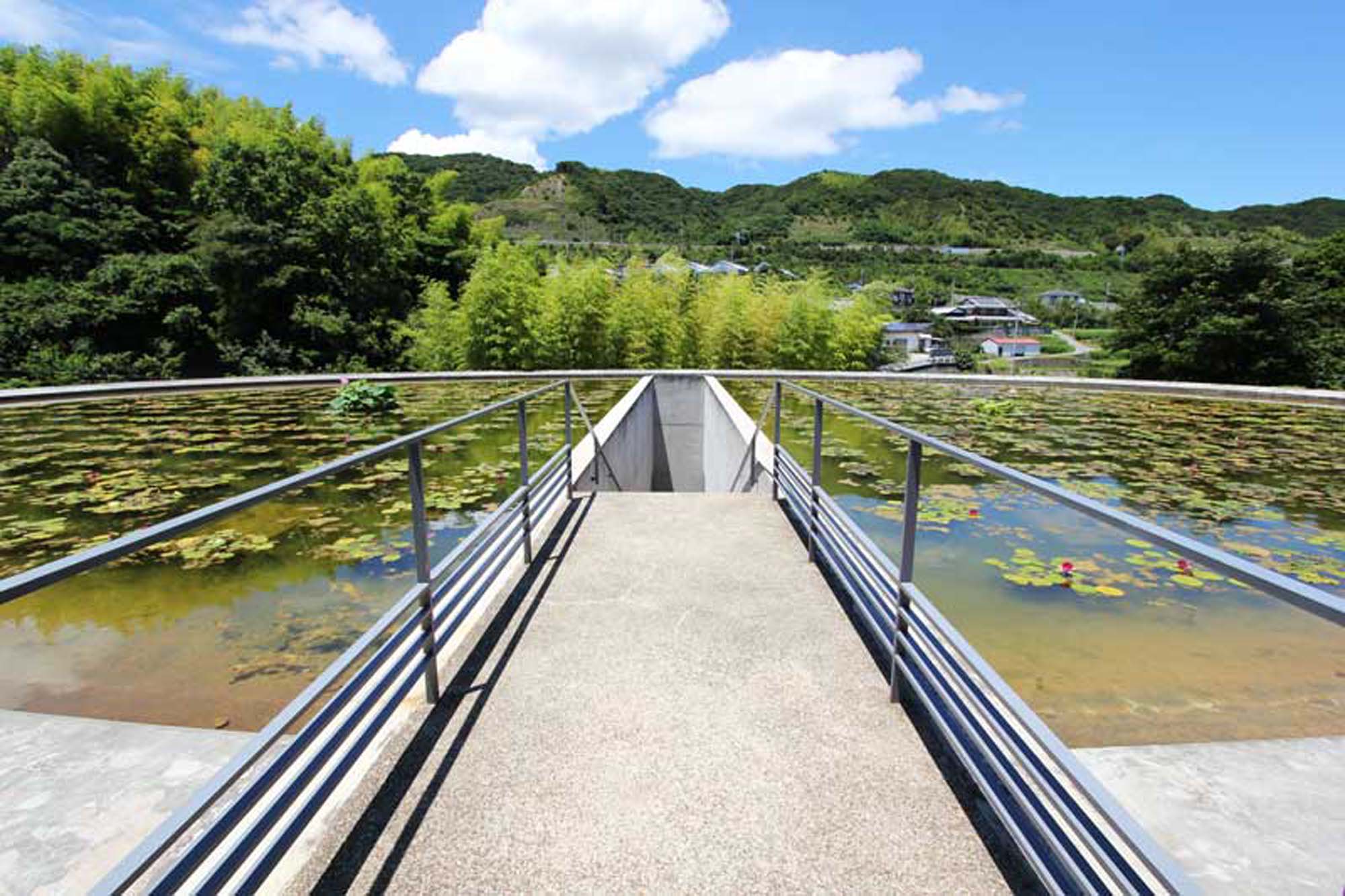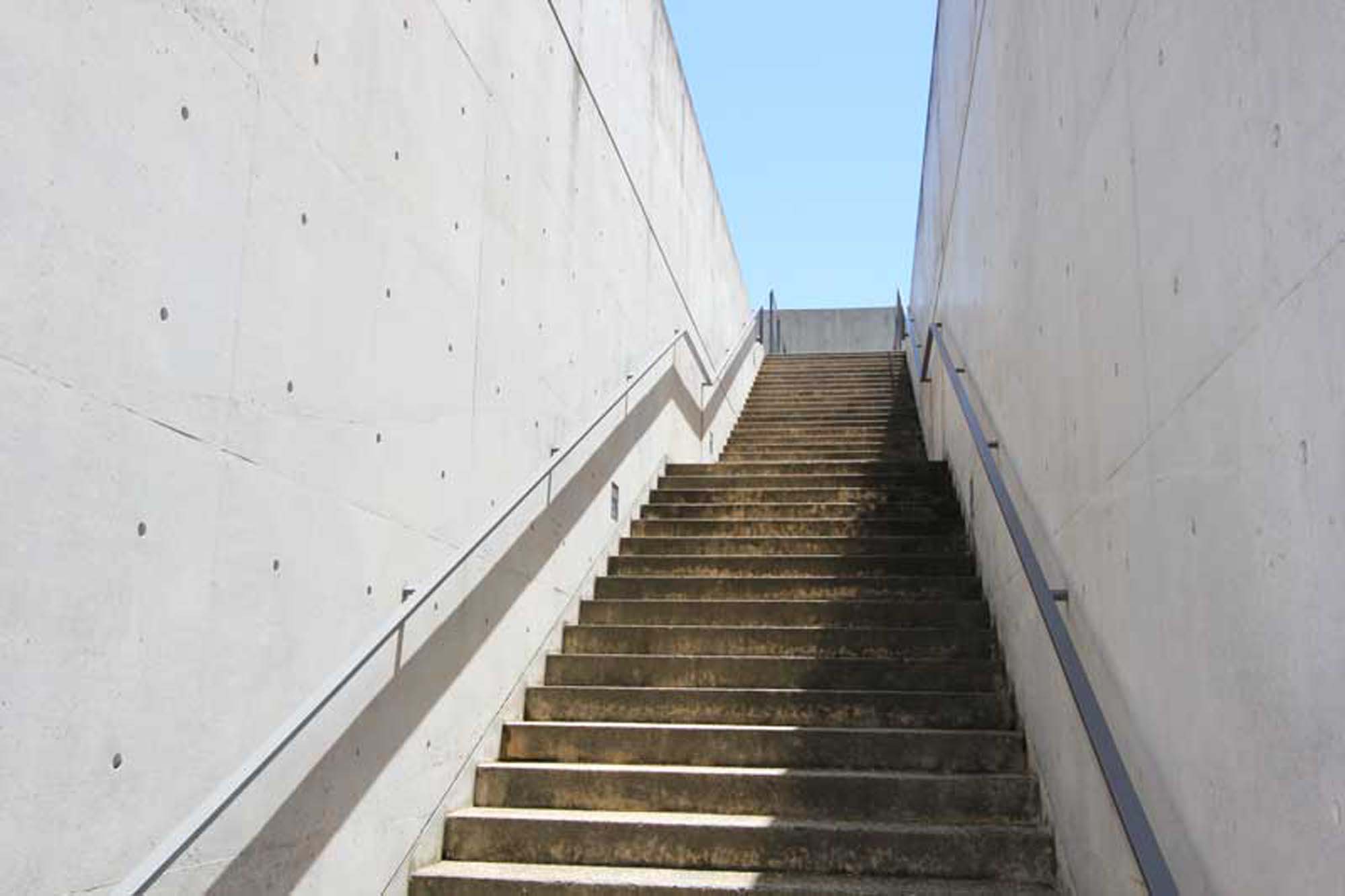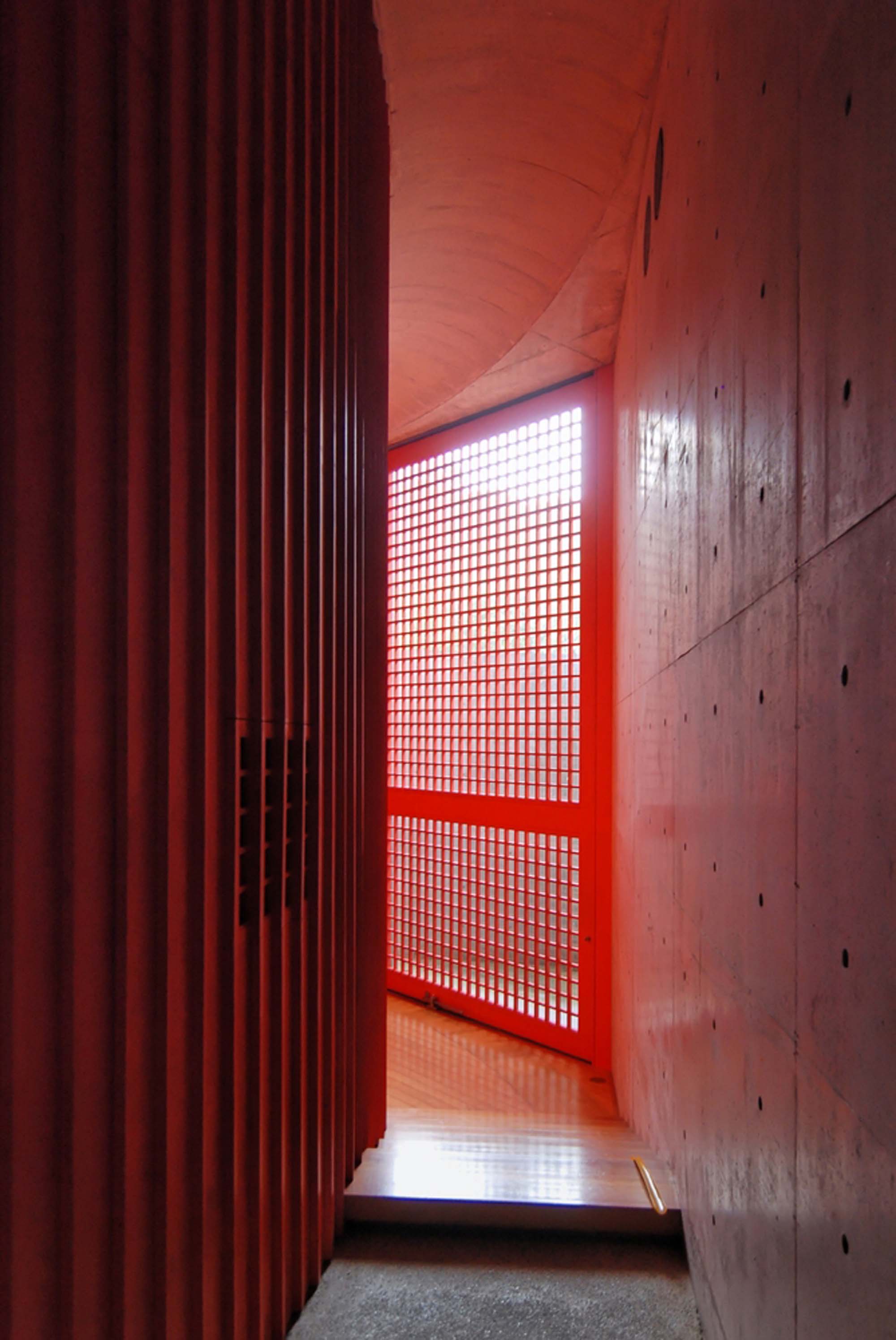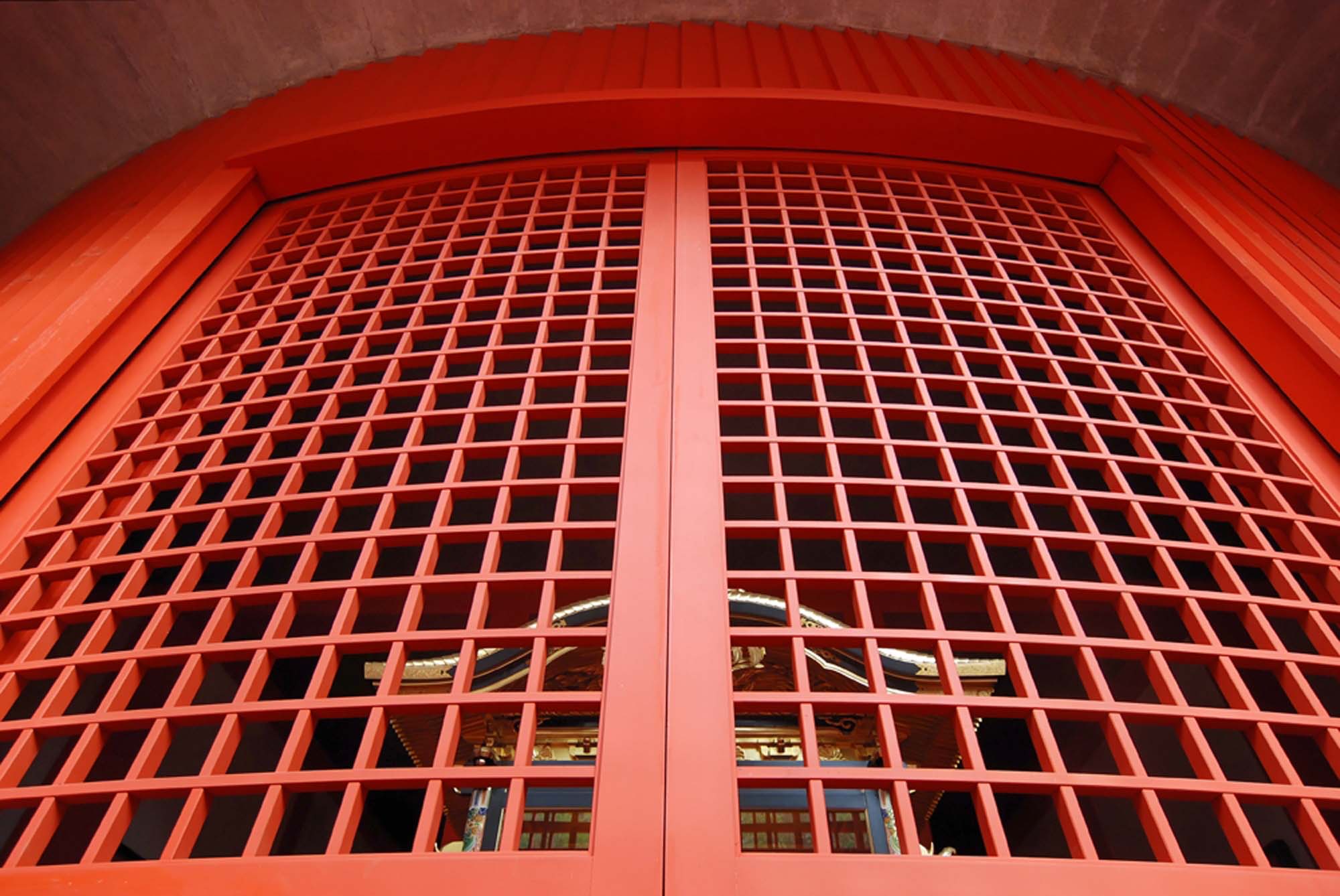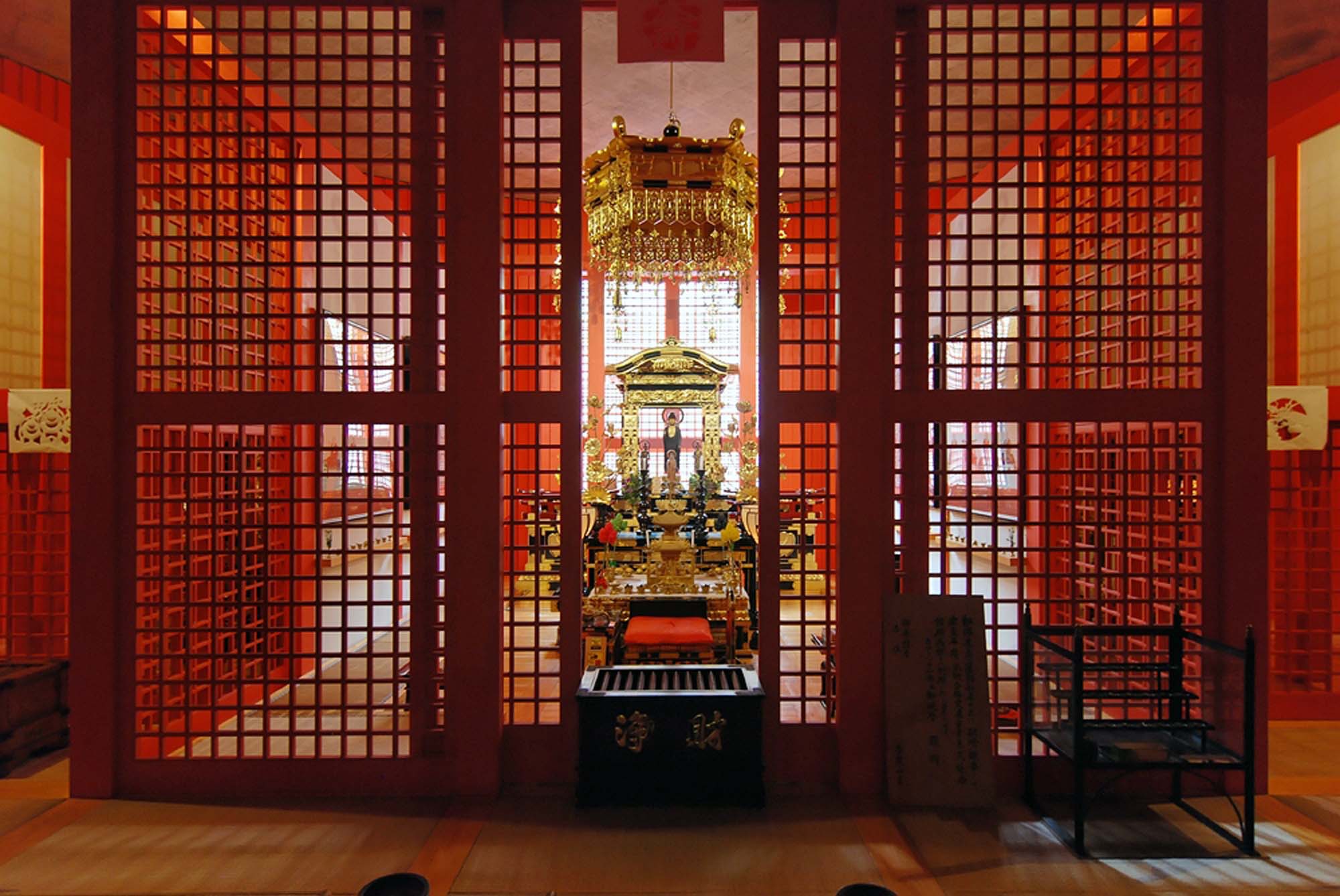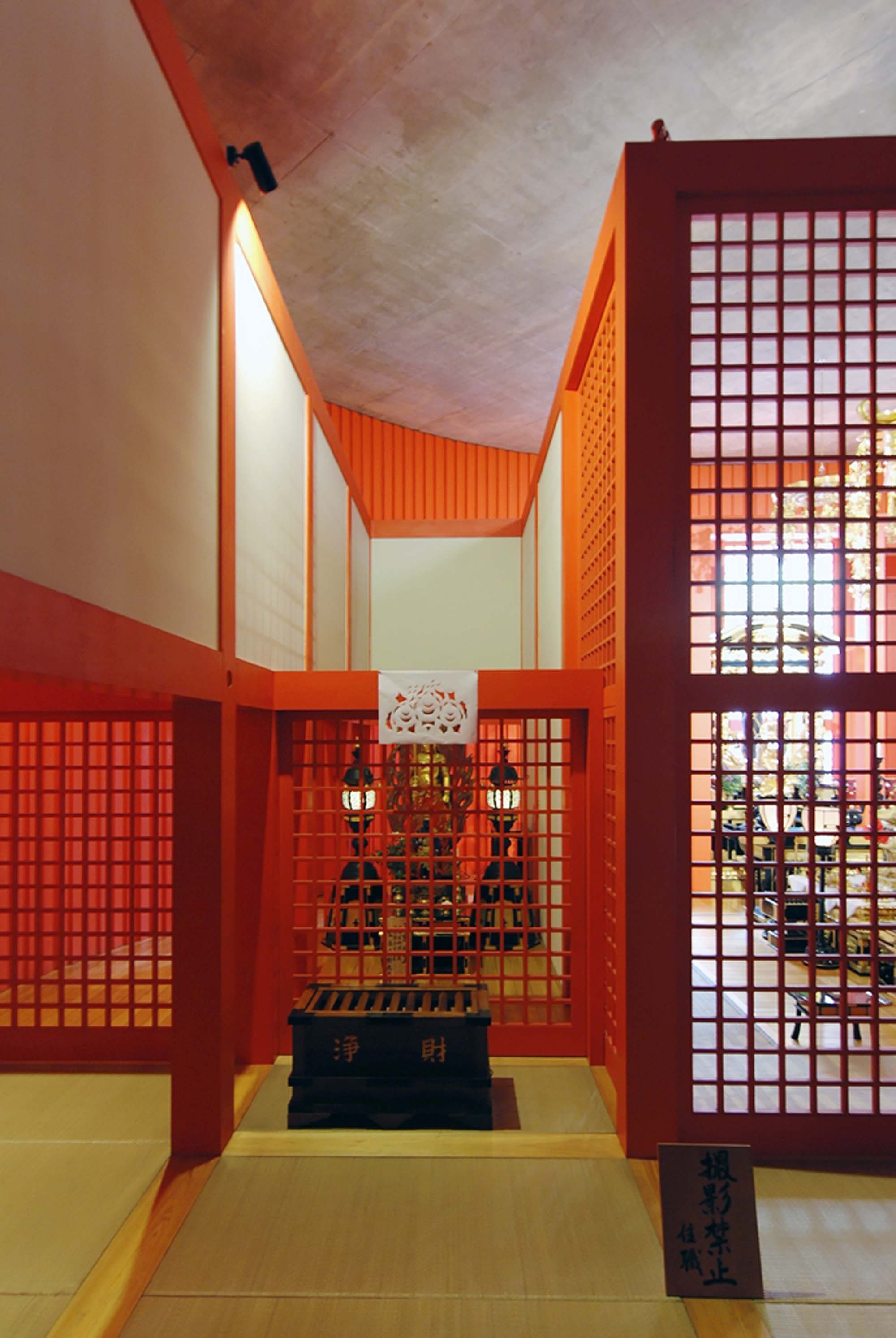Water Temple, designed by famous Japanese architect Tadao Ando in 1989, is an exceptional example of minimalistic and contemplative architecture. Located in Japan, the temple, also known as Honpukuji Temple, is an important place for the local community as it reflects their cultural and spiritual values. The architectural value of this monumental concrete structure is also important for contemporary architecture history. In this article, we’ll talk about the architectural design, function, landscape and impacts of Tadao Ando’s Water Temple.
Having a pure and minimalist design, the Water Temple’s architectural mass consists of simple geometric shapes such as circles, arcs, lines and rectangles. Tadao Ando used reinforced concrete as the main structural material and left both inner and external surfaces bare. This use of concrete in his minimalist buildings has become the signature of the Japanese architect in the passage of time.
Just like in this building, Tadao Ando loves to see concrete in the form of smooth surfaces, curved walls, and geometric forms. However, this building doesn’t seem too much solid and rigid. Because the architect has accomplished softening the rough appearance of concrete and created a perfect harmony between the temple and its surroundings by blending natural materials like wood, stone, and water with concrete.
There are two key elements that play a significant role in the design of Tadao Ando, light and shadow. He has founded a remarkable balance in the architecture of the Water Temple, using these two carefully, in the intersections of inner and outer spaces as well as properly placed openings.
